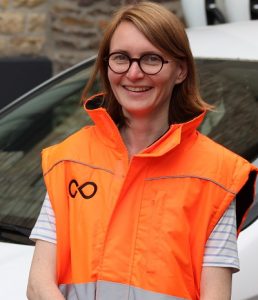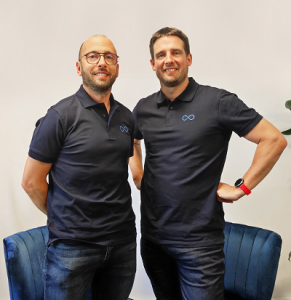[ad_1]
Based on the powerful AI algorithms it has developed, Purecontrol offers a solution to control industrial installations intelligently, while reducing their operating costs and their carbon footprint. Already very well established in the water sector, this real-time data analysis and management solution is also attracting a growing number of players in other areas of the industry.
Founded in 2017, the Rennes-based company Purecontrol won the Greentech label in 2021, then the Solar Impulse Efficient Solution stamp the following year. Today with a team of 55 employees, it generates around 80% of its turnover in the field of water treatment. The remaining 20% are distributed across different areas of the industry. A market that Purecontrol intends to penetrate further in the coming months, thanks in particular to the approximately 7 million euros it raised last May.
Very noticed during the fifth edition of the CYCL’EAU show[1] Bordeaux-Nouvelle Aquitaine, where it was present last March, the company is targeting, for 2024, the objective of 5,000 sites managed using its solution. Purecontrol project manager, Pauline Nerdeux gives us an exhaustive portrait of the company and its technological know-how.
What is the history of Purecontrol in a few key points and what is your role within the company today?

Pauline Nerdeux: I joined Purecontrol a little over a year ago after six years of experience as a design engineer in the field of handwriting recognition. As a project manager, I support clients in the deployment and monitoring of pilots. I also ensure that they are adapted to the constraints and objectives of the site, each project having its specificities.
As for Purecontrol, the company was founded in 2017 by Gautier Avril and Geoffroy Maillard, who came from the world of telecoms. In the course of their duties, they realized that, in this telecommunications sector, there were very large computing powers, conducive to the development and democratization of the use of AI. By looking into the world of automation and industry, they realized the growing complexity of these professions, particularly in a context of increasing environmental constraints. All this against the backdrop of the problem of immobility of programming: once carried out, a programming remained frozen until then, without the possibility of evolving due to external factors (weather, energy costs, etc.). She was therefore not able to adapt to a fluctuating context. They therefore sought to bring these two worlds together to ultimately obtain reductions in the carbon footprint of the installations, as well as a reduction in the costs of the energy consumed for the needs of these sites. They started by developing a solution for swimming pools. For this they appealed to AIwhich allowed them to model the temperature of the pool, and therefore to anticipate the control of water heating equipment.

From there, they also began to work on wastewater treatment plants (STEP), crossing all the data produced by this type of site with external data, such as the weather, but also the electricity consumption provided by the smart meter of the site in question.
What can your solution bring to these wastewater treatment plants?
Our algorithms allow, firstly, to break down the signal to detect the energy consumption of each of the equipment in the treatment plant. By knowing the efficiency of the pumps, we can detect anomalies and carry out predictive maintenance.
With all this data, we also create a digital twin of the installation, using which we will model variables of interest for its operation. For WWTPs, the main variable that we seek to model is the level of pollution in the aeration basin – a basin which allows pollution to be degraded using biomass. This modeling gives rise to what we call a “virtual sensor” or “soft sensor”, which makes it possible to reliably predict the ammonium concentration (NH4+) in the aeration basins. The digital twin will thus be able to plan the best operating scenario for the aerators over the next 24 hours, taking into account the volumes of water to be treated and electricity rates. All this while ultimately achieving the operator’s objective, which is that of the conformity of the water discharged.
The server and the installation communicate every minute. In the event of a discrepancy between the prediction and reality, the algorithm will calculate a new scenario, or at least correct it to keep its prediction. This is what we call MPC : du model predictive control.
Beyond these aspects that I mentioned, our solution also makes it possible to reduce the use of reagents which are injected in order to reduce the levels of phosphorus pollution. In this case, we also set up a “virtual sensor” capable of modeling the phosphorus levels of the water leaving the station, and thus control the reagent injection pumps according to the predictions of the algorithm.
The model is reinforced with data from the automaton, but also field data provided by the operator, which enriches the algorithm.
We are also working on another solution with Cobalt Waterthe American number 1 in the fight against one of the most powerful greenhouse gases emitted by WWTPs, nitrous oxide (N2O). The principle of this solution is quite simple: we collect data from the site, which we transmit to our partner, who processes it using its own algorithms. Cobalt Water then returns us a value which is that of the production of N2O by the STEP at a given time. Our model integrates this value and modifies the aeration sequence in order to minimize this production of nitrous oxide. We have implemented this solution in particular at the Rennes station of Beaurade.
This work around the management of wastewater treatment plants represents a large part of our activities today. We work with companies such as Saur, Suez and Veolia. We thus enable them to make savings on aeration energy costs of 15 to 20%, but also a reduction of at least 20% in the quantities of phosphorus removal reagents.
What are the other possible uses of your technology?
Our technology is also aimed at sanitation network managers. We are indeed able to provide them with a dynamic management solution. This approach makes it possible to manage the automation of several lifting stations at the same time, by giving them coherent control orders, this is “holistic control”. Thanks to our partner Meteomatics, we are able to integrate spatial weather data into our model. This allows our model to predict the quantities of water arriving at each lifting station, while distinguishing the share of strict wastewater from the share linked to rainwater, or even dry water and wastewater. parasitic clear water. This is “flow decomposition”.
From there, our solution makes it possible to split the operation of the lifting stations into two modes: dry weather and rainy weather. In dry periods, our algorithms aim to save energy, by maintaining the water in the lifting station at a higher level. The pump therefore has less work to do to raise the water. Thanks to power decomposition, we are also able to prioritize the pumps which benefit from the best efficiency. A third source of savings also consists of avoiding carrying out tide pools during peak hours.
In rainy weather, our model begins by triggering the emptying of all stations to benefit from a maximum storage level before the arrival of precipitation. Our algorithms are also able to predict the stations most at risk of overflow, and will therefore control upstream stations to avoid these overflows. This dynamic network management allows energy savings of at least 10%, as well as a reduction in overflows of at least 20%.
Another area of use for our technology is in drinking water. It makes it possible in particular to define pumping optimization scenarios, taking into account as many constraints as necessary, for example the limitation of sampling in a particular borehole. What was a real headache – and often even completely impossible to achieve with a conventional automation management solution – becomes simple. We can also control pressures to reduce leaks.
We are also capable of integrating renewable energies (EnR) into the overall management of an installation. Depending on weather conditions, our algorithms are able to predict the production of photovoltaic or wind electricity, and schedule the operating periods of the installations to maximize the self-consumption of these renewable energies.
Finally, we also have many other applications in the field of industry: control of cold production installations in the food industry, thermal optimizations in galvanizing plants, or even control of gas storage in methanization installations. agricultural. Our expertise ultimately applies to any installation, whatever it may be, and makes it possible to optimize its operation and reduce its carbon footprint.

After a first fundraising of 1.7 million euros in 2021, you recently completed a second one, for an amount of 7 million euros[2]. What are the prospects opened up by this new financing operation?
Today we are well established in the field of water treatment. Although there is still much to do in this area, our objective is also to further penetrate the industrial market. We also hope to conquer different European markets: Germany, Benelux, Italy, United Kingdom, Spain… We also recently opened an office in Liège.
We are also aiming to increase our turnover and at the same time plan to increase hiring.
[1] The latest edition of the CYCL’EAU professional show took place on November 29 and 30, 2023 in Aix-en-Provence, in partnership with Techniques de l’Ingénieur.
[2] Concerning the 2nd fundraising carried out by Purecontrol
[ad_2]
Source link